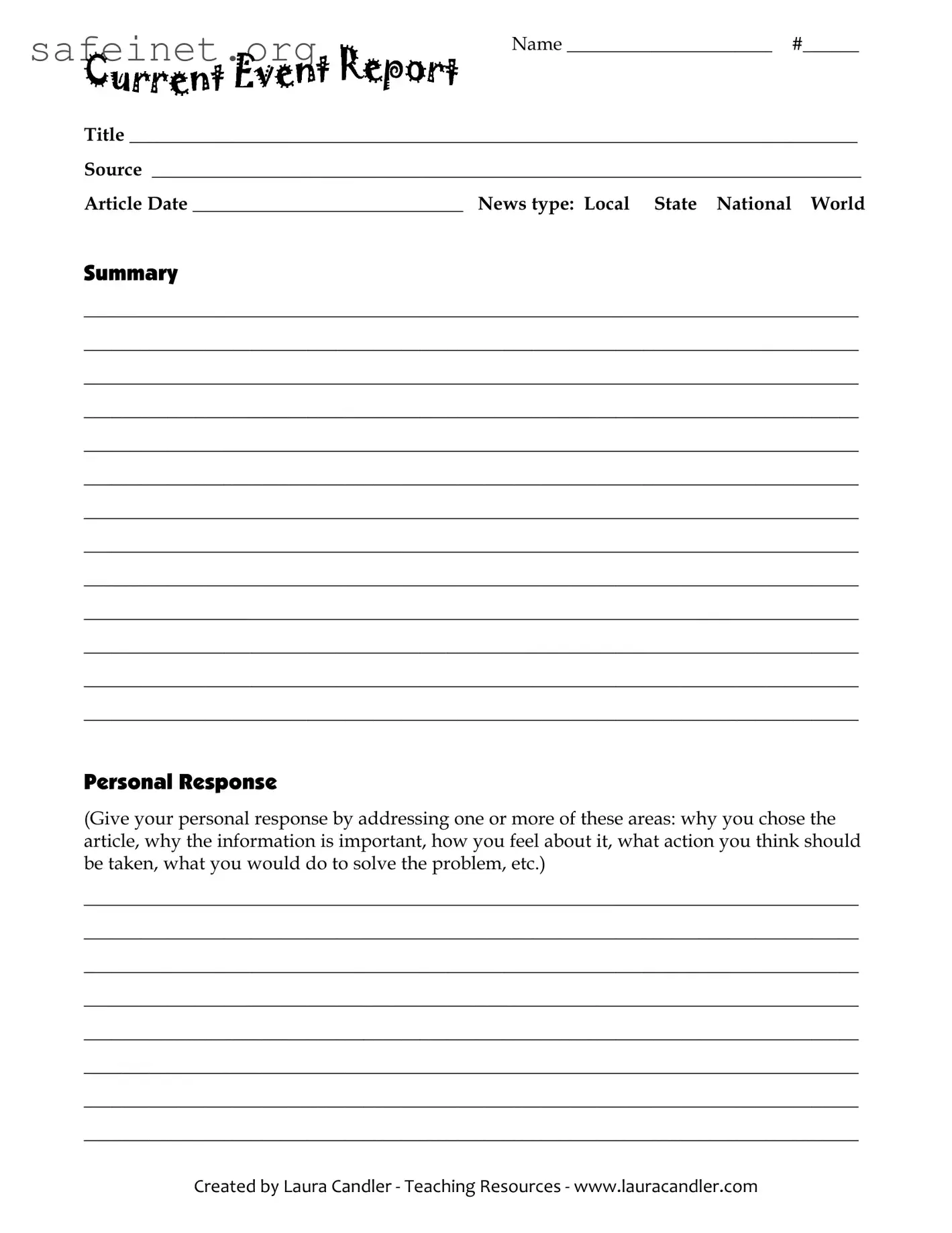What is the Current Event Report form?
The Current Event Report form is a structured document designed to help individuals summarize and reflect on news articles. It includes sections for the individual's name, title, source of the information, article date, and news type. Additionally, it prompts users to provide a summary of the article and a personal response regarding its significance or impact.
Who can use the Current Event Report form?
This form can be used by students, educators, or anyone interested in keeping track of current events. It is particularly useful in educational settings where analyzing news articles fosters critical thinking and enhances understanding of local, state, national, or world issues.
What types of news can be reported using this form?
The form accommodates various types of news stories, categorized as local, state, national, or world news. This versatility allows users to engage with a broad range of topics and issues, ensuring a comprehensive understanding of current events across different levels of significance and impact.
How does one fill out the personal response section?
In the personal response section, individuals should express their thoughts about the article. This can include reasons for selecting the article, its relevance, personal feelings about the events described, and suggestions for action or solutions to any problems highlighted in the report. The aim is to encourage critical thinking and personal engagement with the content.
Is there a specific format to follow when summarizing the article?
While there is no strictly enforced format, it is important to provide a concise and clear summary that accurately captures the key points of the article. This typically includes the who, what, when, where, and why of the news story, presented in a way that provides insight into its broader context and implications.
Can the Current Event Report form be used for publications beyond classroom settings?
Yes, the Current Event Report form can be utilized outside of educational environments as well. Individuals interested in journalism, civic engagement, or simply staying informed can adopt this structure for personal use or even in professional settings to assess articles for news analysis or discussions.
Where can I find the Current Event Report form?
The Current Event Report form was created by Laura Candler and can be found on her website, www.lauracandler.com. It is a resource intended to enhance teaching and learning about current events and can be accessed by anyone interested in this valuable tool.

